In This Issue
- Verizon CEO McAdam
- 5 Top Cloud Stories
- Cloud, VR Top Trends
- Report from the CEO
- 6 Changes to Expect
- Cloud and Innovation
- Distributed Computing
- Cloud Security Issue
- Signs for the Better
- Internet-Connected
- Cloud Moves to Edge
- The New Mega-Clouds
- 2015 Lessons Learned
- Cybersecurity in 2016
- Pentagon Networks
- China May Dominate
- Coming DCIA Events
CEO Lowell McAdam on Verizon’s Three-Tiered Strategy
Excerpted from Business Insider Report by Henry Blodget
 In the four years since Lowell McAdam became CEO of Verizon Communications, the company has expanded 4G LTE service, bought AOL to add content and advertising technology, and has been one of the most aggressive in breaking up the television bundle of channels.
In the four years since Lowell McAdam became CEO of Verizon Communications, the company has expanded 4G LTE service, bought AOL to add content and advertising technology, and has been one of the most aggressive in breaking up the television bundle of channels.
Lowell and I talked about all that and more at Business Insider’s IGNITION 2015 conference.
Henry Blodget: Welcome, Lowell! Your CFO said at an investment conference this week that you might be buying Yahoo. Yes?
Lowell McAdam: I don’t think he exactly said that. As far as we know, it’s not for sale. And I’m pretty sure if it turned out that parts of it or all of it were for sale, we’d look at it just like we look at anything in the digital-media area at this point because it’s so hot.
Blodget: If you were to look at it, what purpose would it serve for you?
McAdam: If we look at our strategy, it has three tiers. Have the best connectivity you can have out there. Own certain platforms that drive a lot of traffic to your network. And then get to content, or solutions, or applications, so that you can show… Read More
Five Top Cloud Computing Stories of 2015
Excerpted from Investing News Daily Report
 Between Amazon finally revealing how profitable its cloud services division is, and Jack Ma’s Alibaba entering the cloud space, there’s been plenty for investors interested in cloud computing to keep an eye on in 2015.
Between Amazon finally revealing how profitable its cloud services division is, and Jack Ma’s Alibaba entering the cloud space, there’s been plenty for investors interested in cloud computing to keep an eye on in 2015.
Here’s a look at some of our most popular cloud computing stories of 2015.
1. Andrew Skafel of Edgewater Wireless Systems talks WiFi3 and the Internet of Things (IoT):
In November, Edgewater Wireless Systems announced the launch of its new IOTair Platform, the first IoT platform to use Edgewater’s WiFi3 technology.
Andrew Skafel, President and CEO of the company, spoke with the Investing News Network about how WiFi3 works and why it’s important for IoT.
2. Here are the top 10 cloud computing companies investors need to watch:
It isn’t a secret that the market for cloud computing is growing quickly.
However, with software-as-a-service (SaaS), platform-as-a-service (PaaS) and infrastructure-as-a-service (IaaS) market segments… Read More
Cloud, Virtual Reality as 2016 Top Tech Trends
Excerpted from Investor’s Business Daily Report by Patrick Seitz
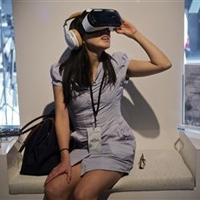 The tech industry will be a battleground in 2016 for companies seeking to dominate in a host of emerging technologies, from cloud computing to over-the-top (OTT) TV.
The tech industry will be a battleground in 2016 for companies seeking to dominate in a host of emerging technologies, from cloud computing to over-the-top (OTT) TV.
The winners will reap the rewards of lucrative new markets.
The losers risk being rendered obsolete.
What follows is a look at five key technology battlegrounds for 2016: cloud computing, voice user interface, virtual reality, autonomous vehicles, and OTT Internet TV.
The information technology industry is seeing a major shift in enterprise IT spending, from on-premise hardware and software to computing resources accessed remotely over the Internet cloud.
Amazon’s Amazon Web Services leads by a wide margin in cloud computing; Microsoft and Alphabet’s Google are in hot pursuit.
Traditional computing hardware firms like EMC, IBM, and Lenovo face the risk of being displaced by the cloud shift… Read More
Report from DCIA CEO Marty Lafferty
 The DCIA is pleased to introduce a new service available at no additional charge to member companies, to help them comply with legislation that President Obama has just signed into law.
The DCIA is pleased to introduce a new service available at no additional charge to member companies, to help them comply with legislation that President Obama has just signed into law.
The DCIA’s compliance audit service will help members ensure that their practices conform to the three major provisions of the Cybersecurity Act of 2015.
For the ten years during which this law will be in effect, broadband network operators and Internet service providers are authorized to monitor traffic, conduct defensive measures, and share information with others regarding threats to cybersecurity.
As with previously enacted legislation addressing other aspects of distributed computing, there will be many questions about interpretation and therefore about specific practices; and that’s where our new compliance audit service will provide assistance.
What methods for scanning, identifying, and capturing data being processed, transmitted, or stored on an information system will be deemed acceptable?
What cybersecurity threats or vulnerabilities can companies point to as reasons for protecting data systems, infrastructure, software, or the information itself?
What constitutes an unauthorized effort to impact adversely availability, confidentiality, or integrity of networks, the content traversing them, or the hardware attached to them — and what is excluded?
And in what ways does such “surveillance to prevent abuse” supersede countervailing state and federal laws?
Regarding defensive measures, what actions to detect, prevent, or mitigate known or suspected cybersecurity threats will be permitted and what tactics will be prohibited?
And under data sharing, what authority is granted for exporting and importing cyber-threat indicators, and what contextual information must be redacted?
The new law is intended to increase the ability of network operators to advance cybersecurity protection in very meaningful ways and to extend that protection to other parties.
The measure offers several definitions of criteria for what qualifies as a malicious threat or a pattern of such threats, but the challenge is to translate these into practical terms.
For the Cybersecurity Act of 2015 to achieve its full potential, there is much to do in clarifying procedures and practices that the courts will deem permissible.
We encourage you to contact the DCIA for help with compliance. Share wisely, and take care.
Changes to Expect in Data Security, Cloud, Mobile
Excerpted from Information Management Report by David Weldon
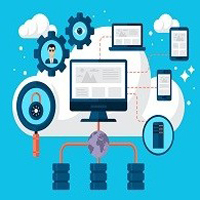 Several analysts have forecast that 2016 will be the “year of action” on many technology fronts, as several recent trends become commonplace strategies.
Several analysts have forecast that 2016 will be the “year of action” on many technology fronts, as several recent trends become commonplace strategies.
Cloud computing, data security, and mobile are tops among them.
Indeed, “2016 will be a challenging year for IT as mobile and cloud force CIOs to adopt a more agile model of information security, policy design, technology evaluation, and lifecycle management,” says Ojas Rege, Vice President of Strategy at MobileIron.
“This new approach overturns 30 years of legacy process and mindset but it can no longer be avoided. As a result, 2016 will be the first year of true transformation.”
Rege offered Information Management his six top predictions for what we can expect in 2016 on the mobile technology and cloud computing fronts. They are:
“In 2016, tension is building between the mobile and desktop teams in enterprise IT,” Rege says.
“The catalyst will be Windows 10, which will allow organizations to adopt enterprise mobility management (EMM) solutions… Read More
The Cloud Will Drive Innovation in 2016
Excerpted from Business Spectator Report by Jeremy Deutsch
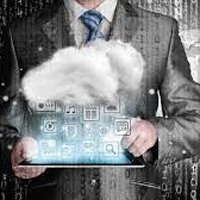 Cloud adoption grew within Australian organizations throughout 2015.
Cloud adoption grew within Australian organizations throughout 2015.
This was largely fueled by the cost and performance benefits that cloud computing offers IT departments.
2016 will see further growth, both from the maturation of cloud services, and organizational wisdom in driving business and commercial performance benefits from cloud infrastructures.
Industry analysts, such as Gartner, Telsyte and Frost & Sullivan, all continue to predict expansion within the local cloud market.
In Telsyte’s Australian Infrastructure & Cloud Computing Market Study 2015, it stated the market value for public cloud infrastructure services is predicted to more than double by 2019, reaching $775 million, up from $366 million in 2015.
Cloud computing also has the attention of Prime Minister Malcolm Turnbull. The Government’s recently tabled and widely lauded $1.1 billion innovation package promotes the adoption of new technologies such as cloud computing.
This push for innovation is well timed as Equinix’s recent Enterprise of the Future Report showed… Read More
Distributed Computing by Oblivious Mobile Robots
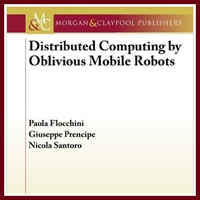 The study of what can be computed by a team of autonomous mobile robots, originally started in robotics and AI, has become increasingly popular in theoretical computer science — especially in distributed computing — where it is now an integral part of the investigations on computability by mobile entities.
The study of what can be computed by a team of autonomous mobile robots, originally started in robotics and AI, has become increasingly popular in theoretical computer science — especially in distributed computing — where it is now an integral part of the investigations on computability by mobile entities.
The robots are identical computational entities located and able to move in a spatial universe; they operate without explicit communication and are usually unable to remember the past; they are extremely simple, with limited resources, and individually quite weak.
However, collectively the robots are capable of performing complex tasks, and form a system with desirable fault-tolerant and self-stabilizing properties.
The research has been concerned with the computational aspects of such systems. In particular, the focus has been on the minimal capabilities that the robots should have in order to solve a problem.
This book focuses on the recent algorithmic results in the field of distributed computing by oblivious mobile robots (unable to remember the past). After introducing the computational model with its nuances, we focus on basic coordination problems… Read More
Cloud Security Still a Concern Heading into 2016
Excerpted from The VAR Guy Report by Elizabeth Montalbano
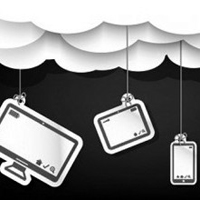 While more enterprises have become comfortable with, and even embrace, cloud computing in 2015, concerns about security associated with the technology remain as the year comes to a close, according to a recent survey by Netwrix.
While more enterprises have become comfortable with, and even embrace, cloud computing in 2015, concerns about security associated with the technology remain as the year comes to a close, according to a recent survey by Netwrix.
The Netwrix 2015 Cloud Security Survey found that 65 percent of companies still have security concerns when migrating to the cloud, while 40 percent are still worried about their loss of physical control over data in the cloud.
Netwrix provides IT auditing software for visibility into IT infrastructure changes and data access, with more than 150,000 IT departments worldwide using the solution.
For the survey, the company polled more than 600 IT professionals worldwide in technology, manufacturing, government, healthcare, finance, education, and other industries.
“We wanted to find out the exact reasons that prevent companies from cloud adoption and taking advantage of all the benefits it offers,” said Alex Vovk, CEO and Co-Founder of Netwrix.
The survey revealed that even though the cloud is not a new technology, the market still has good potential to grow further if better security is in place, he said… Read More
Positive Signs for Better Security in Cloud Computing
Excerpted from Tripwire Report
 Whether you’re a large corporation, a nonprofit organization, or an everyday person who wants to share your data with others, you’ve probably jumped on the cloud phenomenon already.
Whether you’re a large corporation, a nonprofit organization, or an everyday person who wants to share your data with others, you’ve probably jumped on the cloud phenomenon already.
Amazon’s cloud, the iCloud, and a range of others have interconnected the world with speed, efficiency, and convenience.
However, this system has earned a notorious reputation for offering the same ease of access to hackers and cyber-terrorists.
Online hackers have the ability to steal valuable data without risk to themselves, with very little time, and usually without ever leaving the comfort of their homes.
This has caused many to be wary of the cloud, and some businesses refuse to use it altogether due to the risk their data may experience.
A large outcry has been made by those wishing to enjoy cloud computing and storage without fearing danger from cyber-terrorism.
There’s good news; the cloud industry is listening. Positive signs point to new developments and techniques making the cloud safer… Read More
Internet-Connected Homes Open Door to Hackers
Excerpted from CNET Report by Laura Hautala
 Baby monitors, thermostats, kitchen gadgets, and other “smart” devices add convenience to our daily lives.
Baby monitors, thermostats, kitchen gadgets, and other “smart” devices add convenience to our daily lives.
What are manufacturers doing to make sure they don’t make life easier for criminals too?
It’s nighttime in Saudi Arabia, so we can’t see much when Aamir Lakhani hacks into a video stream.
But the fact that we can see the video stream at all is startling.
Even more surprising, we are viewing it from the conference room of cybersecurity company Fortinet, 8,100 miles away in Sunnyvale, CA.
Lakhani, a security researcher at Fortinet, accomplished the hack without any coding skills, though he has those in spades.
He merely went to Shodan.io, a website where anyone can find a huge trove of Internet-connected devices, from baby monitors to cars, cameras, and even traffic lights.
He calls the site the “search engine for the Internet of Things (IoT,” and it allows him to hack into the video stream, picked at random, just by entering word “admin” for the camera’s username and password… Read More
Cloud Computing Moves to the Edge in 2016
Excerpted from Data Informed Report by Andy Thurai and Mac Devine
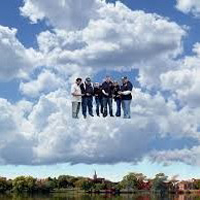 The year 2016 will be exciting in terms of applied technologies.
The year 2016 will be exciting in terms of applied technologies.
We see a lot of technologies maturing and moving from lab exercises to real-world business technologies that solve real-life customer problems — especially in the areas of digital transformation, API, cloud, analytics, and the Internet of Things (IoT).
In particular, we see the following areas evolving faster than others.
Cloud has become the ubiquitous digital platform for many enterprises in their quest to provide a single unified digital platform.
Integrating the core IT with the shadow IT has been the main focus for the last few years, but in 2016 we anticipate the next step in this process.
We started seeing companies moving from the central cloud platforms toward the edge, or toward decentralizing the cloud.
This is partly because, with the proliferation of IoTs, operations technologies (OT) and decision intelligence need to be closer to the field… Read More
The New Mega-Clouds of Cloud Computing
Excerpted from Dataversity Report by Charles Roe
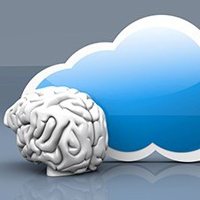 Mega-clouds and “the economies of scale?”
Mega-clouds and “the economies of scale?”
Such a topic is enough to keep smaller cloud computing vendors up at night wondering if their businesses are going to be able to keep up with the pricing demands of the market.
A year ago RedMonk analyst Stephen O’Grady dubbed such economies as “daunting” for traditional data center vendors, in one of the most polite understatements ever uttered.
After all, a year later we’re seeing mega-cloud vendors — Amazon Web Services, Google, and Microsoft — drive server costs to lows impossible for any enterprise data center to achieve.
Oh, and they’re doing it while retaining significant margins for themselves — all of which means we may be on the verge of seeing a complete changing of the guard in enterprise IT that will play out over the next decade.
The article goes on to discuss how and why mega-cloud vendors can keep costs so low.
“The most obvious reason that mega-cloud vendors can charge less for more computing, storage, and other resources is they pay less… Read More
Lessons Learned from 2015 Cyber-Attacks
Excerpted from SC Magazine Report
 Following an onslaught year of massive breaches, 2016 promises to usher in more of the same, but with each breach there was a lesson to be learned, according to a Trend Micro report.
Following an onslaught year of massive breaches, 2016 promises to usher in more of the same, but with each breach there was a lesson to be learned, according to a Trend Micro report.
That’s the sobering prediction from Trend Micro, which summed up 2015 as “a roller coaster ride” that saw attackers infiltrate successfully even US government databases, such as the Office of Personnel Management (OPM), as well as major corporate targets like JP Morgan, health insurance firm Anthem, and prison tech company Securus.
“What can we learn from these incidents?” Trend Micro asks rhetorically, so the industry is better prepared for 2016.
“Well, it is clear that government systems need to be better protected against targeted attacks.”
Regarding lessons learned from 2015, Trend Micro said it behooves both public and private sector organizations need to make protecting themselves against the growing threat of targeted attacks a priority.
The dark-net has proven to be well adept at launching fairly sophisticated cyber intrusions that fly under the radar of traditional security defenses, the post noted.
Trend Micro suggested organizations implement the following remedial measures… Read More
Cybersecurity Predictions for 2016
Excerpted from USA Today Report by Steve Weisman
 Last year I quoted late, great sage and Hall of Fame baseball player Yogi Berra.
Last year I quoted late, great sage and Hall of Fame baseball player Yogi Berra.
Yogi once noted, “It’s tough to make predictions especially about the future.”
Fortunately, for me, mine for 2015 were accurate.
And so I will venture out to again make predictions, many of which should be considered warnings, for 2016 — as I remain all the while cognizant of the words of the Chinese philosopher La Tzu that, “Those who have knowledge, don’t predict. Those who predict don’t have knowledge.”
So here are my cybersecurity predictions for 2016:
1. The Internet of Things (IoT) will increasingly be exploited by hackers.
With more and more products including cars, refrigerators, coffee makers, televisions, smartwatches, webcams, copy machines, toys, and even medical devices being connected to the Internet, the IoT will become a prime target for hackers to exploit in many ways… Read More
Pentagon Networks Could Get Hacked
Excerpted from Daily Caller Report by Ethan Barton
 Data could be stolen from cloud-based digital networks the Department of Defense (DoD) doesn’t even know it operates, according to the Pentagon’s chief internal watchdog.
Data could be stolen from cloud-based digital networks the Department of Defense (DoD) doesn’t even know it operates, according to the Pentagon’s chief internal watchdog.
Defense officials don’t know how many cloud computing service contracts they have or what data is carried on the networks involved with those contracts.
Lack of such knowledge prevents DoD officials from accurately tallying cost savings or protecting information, the DoD inspector general said in a report released Wednesday.
“DoD did not maintain a comprehensive list of cloud computing service contracts,” the report said. “As a result, DoD cannot determine whether it achieves actual savings or benefits from adopting cloud computing services and may not effectively identify and monitor cloud computing security risks.”
DoD uses cloud computing in the civilian sector.
It involves network-based digital storage space and other computer resources that are accessed on a subscription basis.
Cost savings come from storing data remotely instead of on a computer hard-drive… Read More
CES 2016: China May Dominate Vegas
Excerpted from International Business Times Report by David Gilbert
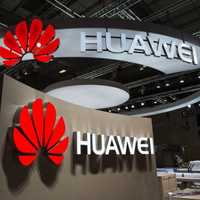 When the hundreds of thousands of journalists, executives, government officials, and exhibitors from over 150 countries walk into the main hall at the Las Vegas Convention Center for the International Consumer Electronics Show (CES) next week, the first booth they will see is Intel, but flanking the US chip giant will be two big Chinese companies occupying prime real estate at the world’s biggest technology show.
When the hundreds of thousands of journalists, executives, government officials, and exhibitors from over 150 countries walk into the main hall at the Las Vegas Convention Center for the International Consumer Electronics Show (CES) next week, the first booth they will see is Intel, but flanking the US chip giant will be two big Chinese companies occupying prime real estate at the world’s biggest technology show.
It’s a clear indication of how prominent companies from the planet’s second-biggest national economy are becoming on the global stage.
Changdong and Hisense are both major TV manufacturers from China, but they are far from well-known brands among US consumers.
However, these companies and others — like ZTE, Huawei, DJI, TCL and Faraday Future — will all be making their presence felt in Las Vegas in the first week of January.
They will be hoping to use the tech extravaganza as a springboard to become household names in the US.
Hisense made waves in 2013 when it took up the huge booth vacated by Microsoft in what was seen by some as a sign… Read More
Coming Events of Interest
CES — January 6th-9th in Las Vegas, NV. The world’s gathering place for all who thrive on the business of consumer technologies. CES has served as the proving ground for innovators and breakthrough technologies for more than 40 years.
Industry of Things World USA — February 25th-26th in San Diego, CA. A new international information exchange forum featuring four concurrent tracks covering business model generation, technology and infrastructure, data management, and security.
Delivery of Things World — April 25th-26th in Berlin, Germany. DevOps specialists, continuous development strategists, architect newbies, development geeks, and cloud geniuses from across the spectrum of DevOps transformation come together at this stimulating and innovative event.
DataCloud Europe 2016 — June 8th-9th in Monte Carlo, Monaco. The 2016 conference will focus on cloud computing advances and changes in data management, with a stellar line-up of speakers including global infrastructure leaders and subject matter experts.
Cloud and DevOps World Forum 2016 — June 21st-22nd in London, England. Now in its eighth year, C&DWF is firmly established as the leading content-led exhibition for the European Cloud and DevOps community and the premiere meeting place for CIOs.
Security of Things World — June 27th-28th in Berlin, Germany. Topics include securing cyber physical systems for IoT, expanding IT security with intelligence-led ops, business continuity management considerations, data privacy in an interconnected world, and security strategies.
Industry of Things World Europe — September 19th-20th in Berlin, Germany. IoT business models, new IoT markets and strategies, product lifecycle management, next generation data handling and value assessment, IoT organizational impacts, and IoT security issues.
